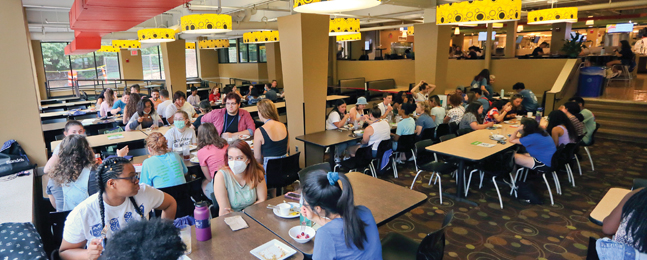A Recipe for Reducing Brandeis’ Food Carbon Footprint

Mike Lovett
by Jarret Bencks
A new sustainable dining program has led to an unprecedented 20% reduction in the university’s food carbon footprint.
As a result, in December the Association for the Advancement of Sustainability in Higher Education named Brandeis the winner of its Campus Sustainability Achievement Award. Brandeis was one of a handful of winners selected from more than 360 submissions.
“We serve thousands of meals on campus every day, and we purchase close to a million pounds of food each year,” says Mary Fischer, associate director of sustainability programs at Brandeis. “So food is a crucial lever we can pull to reduce the environmental and social impacts on the planet, especially climate change.”
Dining program changes included reducing the amount of beef served, increasing the amount of locally sourced and sustainable foods served, holding events to promote plant-based diets, and implementing a food waste reduction program in Brandeis kitchens.
The new program got its start in 2019 when the university decided to put its dining contract out for bid. The requests for proposal included sustainability language created by the university’s Office of Sustainability after extensive research, resulting in a contract that contained sustainable-dining metrics and scoring. New menus were introduced in spring 2021.
“We found that reducing the footprint of our food purchases is not only possible but easy,” says Fischer. “We heard zero negative feedback from our students, and the implementation of our pilot program in the spring semester, which resulted in a reduction of nearly 50 tonnes of carbon, cost nothing. A capital energy efficiency project with similar benefits would likely cost hundreds of thousands of dollars.”
The reduction in the consumption of beef, which has a significantly larger carbon footprint than most other meats, was a particularly remarkable achievement. The sustainable dining program hoped to reduce beef consumption by 4% in its first year. By offering red meat less frequently, and by blending hamburgers with locally sourced mushrooms and onions, ground beef consumption actually dropped by 50%.
“Very few institutions are doing the level of purchasing review and analysis that we are doing,” Fischer says. “It’s the key to making progress and leveraging the impact of our dining program.”
